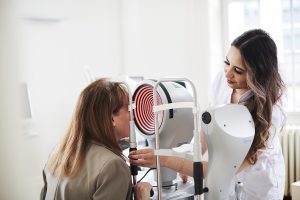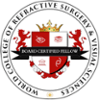A Quick Guide to Good Eye Health

Most of us tend to take the best care of the parts of our body we can see. We wash and condition our hair regularly, brush our teeth religiously, and even clean and trim our nails every now and then. But when it comes to the things we can’t see, many of us aren’t even sure exactly how to take care of them.
To be fair, this makes a lot of sense. I mean, how do you know how to take care of something that we can’t see? For example, organs such as the liver and intestines are not often on our minds when we look in the mirror in the morning. But what about another of our most valuable organs – the eyes?
We can’t use the same excuse when it comes to our eyes. Most of us will see them every single day, yet they are usually overlooked. This is somewhat ironic when you consider that our eyes are vital for seeing every other part of our body that we tend to take such good care of.
Still, along with our teeth, ears and skin, our eyes can be useful markers for determining not only our physical health but also our mental and emotional well-being. So, maybe it’s about time we start considering the best ways to take care of our eyes.
With this in mind, we’ve put together this quick guide to maintaining eye health, to keep these valuable gateways to the soul working as well as possible and ensure your vision is the best it can be.
Eating Well for Healthy Eyes
We all remember being told when we were children that eating carrots would help us to see in the dark. But while we might have dismissed this advice as we got older, it turns out there is some truth to it! Carrots contain beta-carotene, a type of Vitamin A that helps parts of the eye, such as the retina (the photosensitive layer at the back of the eye), function properly.
But we don’t just need carrots to help keep our eyes healthy. Many other vitamins and minerals are also essential for maintaining eye health (as well as our overall health). For example, lutein, zeaxanthin, omega-3 fatty acids, vitamin A, vitamin C, vitamin E, and zinc are all great for our eye health.
Foods that are rich in these valuable ingredients include broccoli, flaxseeds, apricots, almonds, and spinach.
Things to Avoid to Maintain Eye Health
When it comes to the health of our eyes (and every other part of our body), it’s not all about things we should be doing, but also things we shouldn’t be doing. For example, overexposure to harmful products like alcohol and tobacco can have a significantly negative effect on our eye health.
Heavy drinking, in particular, can disrupt the absorption of vitamins by the liver and eventually result in impaired vision. Furthermore, smoking regularly has been linked with an increased risk of developing cataracts and macular degeneration.
Protecting Your Eyes Against Damaging Rays and Materials
We humans have evolved certain characteristics to help protect our eyes from debris and light rays. Our eyes sit in recesses in our heads and are further protected by our eyelids and eyelashes. Even our eyebrows are useful at providing valuable shade in bright conditions.
Our eyelids help to keep our eyes hydrated, block debris and are complete with a squint reflex that comes into play when we find ourselves in bright light. However, no matter how impressive, these mechanisms are not always enough to fully protect our eyes from UV radiation – which can even be high on cloudy days.
Most of us will only consider wearing sunglasses on bright, sunny days; however, checking the weather forecast for the level of UV radiation can let you know when else your sunnies can be invaluable for protecting your eyes. It’s also important to ensure you have a good quality pair of sunglasses. Opt for a pair that protects against 99% of both UVA and UVB rays to best limit eye damage.
While most of us are aware of the damage UV rays can do to our eyes, less is known about the negative effects of smoke, debris, and other small particles in the air. Exposure to free radicals such as these can quickly lead to inflammation and infection which, if not managed, can become a threat to your vision. Wearing protective eye protection – particularly in dusty environments – can he invaluable at preventing debris from entering your eyes.
Shielding Your Eyes During Screen Use
At no time in history have screens ever played a more important role in our lives. We use them every single day – whether it be our computer screens at work, our smartphones during our breaks, or our televisions in the evenings. But many people are still unaware of the role such exposure to screens can have on our eye health.
Yet, when we consider the growing number of people who are affected by computer vision syndrome (CVS), also known as digital eye strain, the problem becomes clear.
Prolonged periods of screen exposure can decrease our blinking rate by up to half. This causes the eyes to become increasingly dry, fatigued and strained. Thankfully, there are some things we can do to reduce digital eye strain – even if you have to use screens at work all day.
Adopting the 20-20-20 rule – every 20 minutes, stare at something at least 20 feet away for at least 20 seconds – can help to give your eyes a well-needed rest and help to prevent headaches and facial, neck, and shoulder strain. Still, if you believe you are suffering from digital eye strain – as well as any of the other conditions mentioned in this article – it is recommended that you visit your eye doctor.
If you’d like to learn more about caring for your eyes, why not get in touch with one of our friendly clinic coordinators? We’re always on hand to help! Alternatively, to find out if you could be suitable for Laser Eye Surgery, Book a Consultation today.


